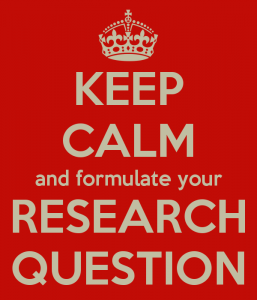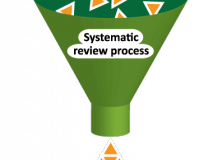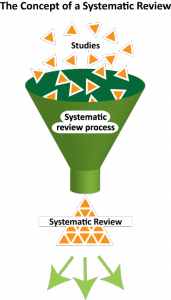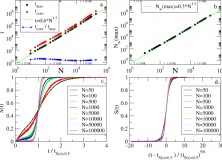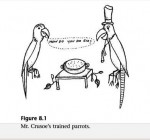Broad hypothese are better than narrow ones as they can be applied to a wider range of things. That’s probably a controversial thing to say, but it’s certainly true that the beauty of most evolutionary theory lies in its simplicity, and therefore its ability to be applied to more than just biology. So how do different evolutionary theories fair when applied to the world of language? I’ll look here at the gene’s eye view of evolution and developmental systems theory.
The gene’s eye view of evolution
The gene’s eye view of evolution splits evolution up into the two processes, replication and interaction. The replicators are the things which are copied (generally genes) and the interactors are the organisms which interact with their environment. In this post I will be sticking with the terms ‘replicator’ and ‘interactor’ as posited by Hull (1980) as opposed to Dawkins’ ‘replicator’ and ‘vehicle’ as Hull’s terms are much more applicable to language as Hull formalised it as a generalised theory which Hull himself has applied to cultural evolution (Hull 1988).
Maynard-Smith and Szathmáry (1995) argue that since language and the genome are recursive then only these two mechanisms have an infinite number of heritable states which is why a replicator view of natural selection can only account for these two mechanisms. Many Linguists have tried to apply a replicator view to the evolution of language, both with regards to language’s biological and cultural evolution. Regarding the cultural evolution of language, there seems to be many parallels with biological evolution which can be drawn with the controversy as to what can be considered a replicator. David Hull (1980) defines a replicator as “an entity that passes on its structure directly in replication”. Within language this could qualify anything which allows us to say the same thing in a different way. This means that replicators can lie at a phonemic level, in that vowels can vary and some realisations will be more successful than others with regards to contrastive difference from other vowels. Morphemes can also vary and be more selectively successful in terms of productivity. Selection can work all the way up to lexemes and syntax, both on a wide scale, or on a narrow scale, with a specific idiosyncratic structure emerging in some frequently used phrases. If one of two interlocutors in a communicative act uses an idiosyncratic structure to express something, and is successful in being understood, then they will see little point in changing the utterance next time they want to express that proposition, this, presumably, would ‘catch on’. Croft (2000) lumps all of these possible replicators under a general heading of ‘lingueme’ to make them more analogous with genes. This may be an oversimplification, as layers of structure as they appear in language are not present in the DNA sequence (or at least not understood to the same level as they are in language) past the distinction of nucleotides, codons and ‘genes’, and even upon this distinction it is usually argued that single nucleotides and codons cannot be replicators, whereas, it seems that the smallest particles of language structure can be.
Croft (2000) argues that the selection of linguistic replicators is driven by social factors as he claims that speakers select variants with regards to their social values. However, as in biology, selection where not only functional selection, but sexual selection and social selection, also exist, it seems odd that language evolution would not also be driven by a combination of factors, both functional and social.
Language does not pass purely from vertical transmission from one generation to the next, as genes do, horizontal transmission is also present and there is linguistic input from more than just the two parents of an individual. Horizontal gene transfer, which occurs when an organism acquires genetic material from a different organism, but not through the process of replication or reproduction, could be described as analogous to this but this certainly isn’t the norm within genetic evolution as it is in the transmission of language (Pagel, 2009).
Developmental Systems Theory
Developmental Systems Theory (DST) is an approach to evolution in opposition to replicator/interactor view of natural selection. It takes the position that more things need to be taken into account than just replicators and interactors and that if anything is the unit of selection then it is the entire developmental system an organism takes. This stresses the importance of non-genetic factors and their role in evolution. Many layers of structure need to be considered and each of these layers of structure can only be accounted for in their own terms. A DST approach to the emergence of language is one which takes the whole developmental cycle of language acquisition and communication into account. The learning biases of children certainly counts as a unique event which is responsible for individual differences in each generation. As well as this, the learning biases of adults can also contribute to language evolution from a DST approach in societies where there are many second language speakers (Wray and Grace 2005). Learning biases in transmission are often cited exclusively in the context of cultural evolution; however, learning biases have now come to give us a good explanation as to how linguistic constraints may have become genetically assimilated after cultural transmission occurred though mechanisms such as the Baldwin Effect (Baldwin, 1896). If there’s any call for it I’ll post a 101 on the Baldwin Effect in the near future.
Refs
Baldwin, M. J. (1896) A New Factor in Evolution. The American Naturalist, Vol. 30, No. 354, 441-451.
Croft, W. (2000) Explaining language change: an evolutionary approach. Harlow: Pearson.
Hull, D. L., (1980). Individuality and Selection. Annual Review of Ecology and Systematics, 11: 311–332.
Hull, D. L. (1988) Science as a process: an evolutionary account of the social and conceptual development of science. Chicago: University of Chicago Press.
Maynard-Smith, J. and Szathmáry, E. (1995) The major transitions in evolution.
Pagel, M. (2009). Human language as a culturally transmitted replicator. Nature Reviews Genetics, 10(6), 405-415.
Pinker, S. and P. Bloom (1990). Natural Language and Natural Selection. Behavioral and Brain Sciences 13.4: 707-726.
Wray, A. and Grace, G. (2005) The consequences of talking to strangers: Evolutionary corollaries of socio-cultural influences on linguistic form. Lingua, 117 (3), 543-578



